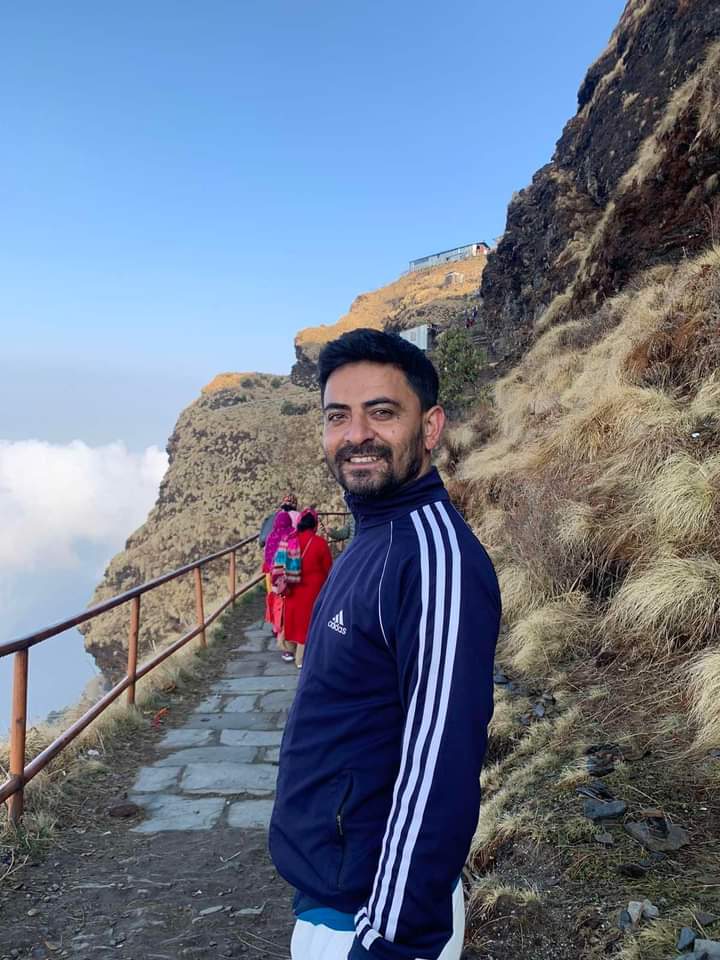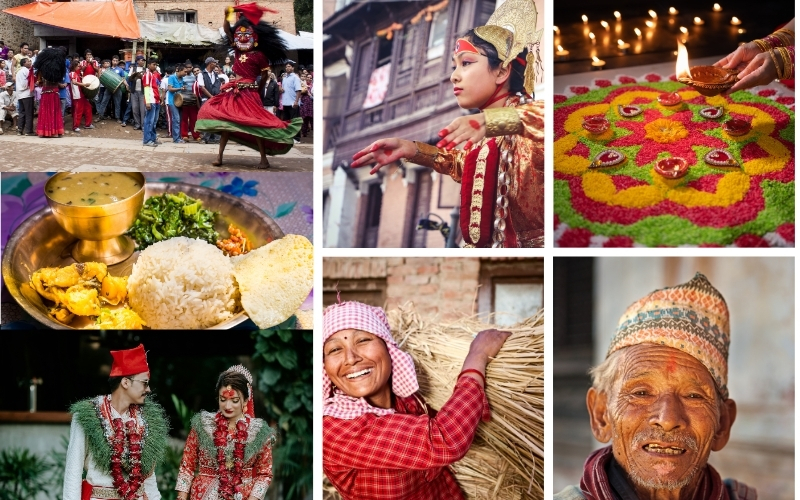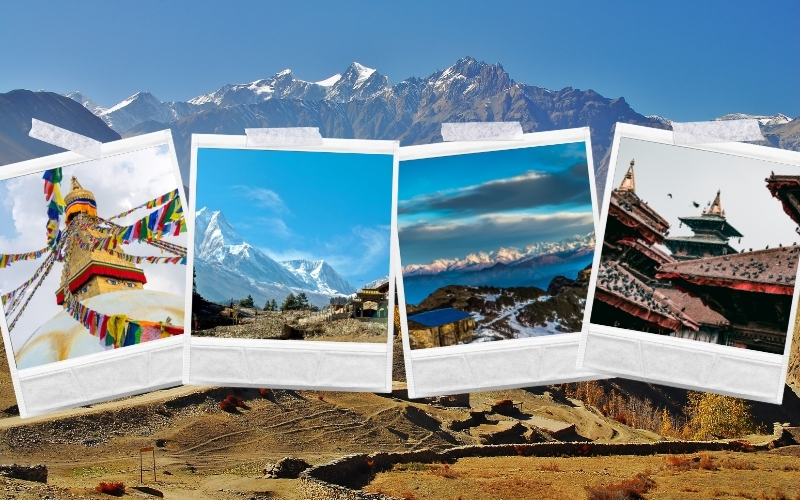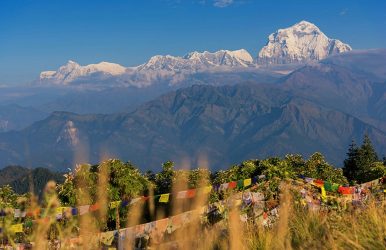Nepal, the landlocked country that lies in between two giant nations China and India is not only famous for its
The Ultimate Guide to Trekking in Nepal: Everest, Annapurna, and Beyond
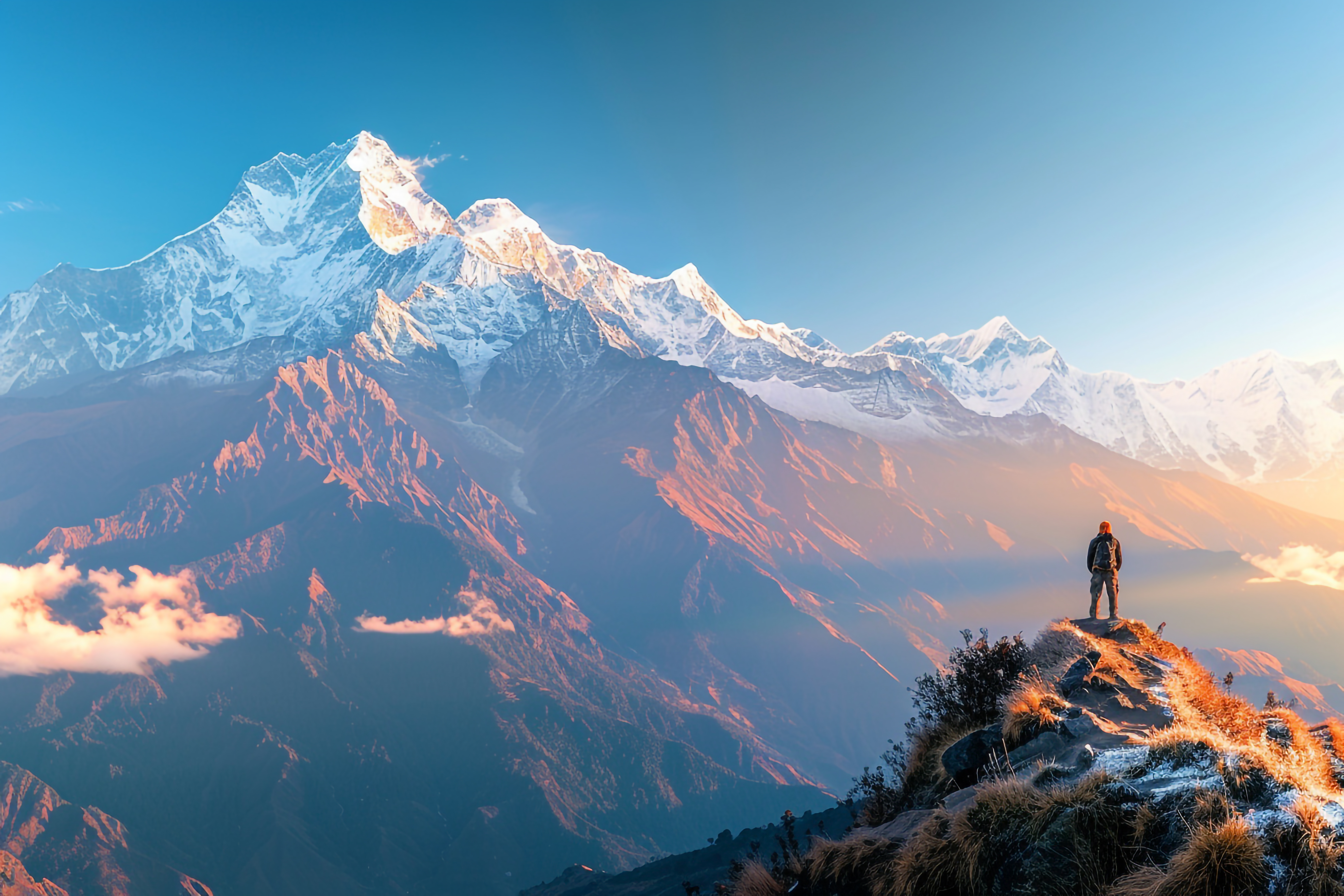
Sandesh Acharya
Nepal that boasts twice number of world’s tallest peak in just one country, seven of them within the territory of the country ranging from Mount Everest down to other mighty ranges has always been popular among trekkers over the generations. It is richly illustrated and will bring you from basic preparations through the practical aspects of treks, into the culture of the men and women of the mountains, in Nepal.
Understanding Nepal’s Trekking Regions
To understand Nepal’s trekking regions proper knowledge and some explanation needs to be provided to the reader. Nepal’s trekking landscape can be divided into several distinct regions, each offering unique experiences and challenges:
Everest Region (Khumbu)
The Everest region, sometimes referred to as the Khumbu, is undoubtedly the most popular area for trekking in Nepal. This area welcomes tourists in their thousands every year as they aim to trek to the Mount Everest and get feel of the Sherpa people. A number of nice trails, comfortable teahouses, and beautiful high altitude views can be traced on this region.
Annapurna Region
At the same time, the Annapurna region has a great number of opportunities for various types of travel hunters ranging from subtropical canyons to the arid plateaus. It is famous for the Annapurna Circuit also referred to as the ‘apple pie circuit” for the reason that there are so many western dishes obtainable in the teahouses. The region has good physical facilities, beautiful mountains, and rugged terrains that will allow beginner and expert hikers.
Langtang Region
Situated close to Nepal’s capital city, Kathmandu, the Langtang region is the third most famous trekking destination. It has beautiful mountain terrains and varying geographical terrains within a relatively small coverage and this makes it favorable trekking destination for people with limited time.
Manaslu Circuit
Fewer trekkers venturing to Manaslu Circuit compared to the busy season in Everest and Annapurna area but most attractive features comparable to the latter and with minority culture and costume in the upper Tsum Valley as an additional bonus.
Major Trekking Routes
Everest Base Camp Trek (EBC)
- Duration: 12-14 days
- Difficulty: Moderate to Challenging
- Maximum Altitude: 5,364m (EBC)
- Highlights: Scenic view of Mount Everest, Khumbu Glacier, Sherpa peoples’ settlements, Namche market
The EBC trek is the most popular trekking area in Nepal. From Lukla the trail passes through the Sherpa settlements, old monasteries and bridge famously hung suspension bridges. Major halt is offered at Namche Bazaar, the religious destination of Tengboche Monastery and the top destination of the base camp.
Annapurna Circuit Trek
- Duration: 14-21 days
- Difficulty: Moderate to Challenging
- Maximum Altitude: 5,416m (Thorong La Pass)
- Highlights: Terrific views, cultural and authentic houses, geysers, mountains
The area occupied by Annapurna circuit is highly diverse, starting with Hindu population in lower part of the trek, and finishing with Buddhists in upper part of the trek. The difficult Thorong La Pass has to do moving across the high stiff pass but has even better view if the whole Annapurna Massif including Dhaulagiri.
Annapurna Base Camp Trek (ABC)
- Duration:
- Difficulty: Moderate
- Maximum Altitude: 4,130m (ABC)
- Highlights: The Rhododendron forests Particularly in Modi Khola Valley; An open ground surrounded by a ‘circle of peaks’.
Although this one is slightly shorter, it will take hikers into the central part of the Annapurna region, where peaks surround trekkers on all sides.
Langtang Valley Trek
- Duration: 7-10 days
- Difficulty: Moderate
- Maximum Altitude: 4,984m (Kyanjin Ri)
- Highlights: Flowering Rhododendron trees, Yaking grazings, Glaciers, Tibetan culture.
The Langtang Valley trek is an ideal one for a first experience of the great Himalayas which gives a blend of both the scenery and the Nepalese people in less time.
When To Trek?
Although the best time for trek may differ in relation to traveller interests in Nepals.
Pre-monsoon (March to May)
- Most popular season
- The remained clear skies and any deviations from stable weather.
- Comfortable temperatures
- Busiest time on trails
Winter (December to February)
- Cold temperatures
- Clear skies
- Fewer trekkers
- That is why some high passes may remain closed all year round.
Monsoon (June to September)
- Wet conditions
- Limited visibility
- Leeches on lower trails
Required Permits and documentation
| Trekking Permits | Documents |
| 1. TIMS Card (Trekkers’ Information Management System) 2. National Park Entry Permits Special Permits for restricted areas to access the premises with restriction Few Only some members of the restricted area are allowed to evacuate the premises. 3. Conservation Area Permits | 1. Valid passport 2. Passport-sized photos 3. Travel insurance details 4. Contacts of Next of kin |
Physical Preparation
| Cardiovascular Fitness | – Routine aerobic exercise (at least 3-4 months prior to the trek). – Focus on endurance training Trainees should ensure that hill walking is part of training. – Regular swimming or cycling |
| Strength Training | – Core exercises – Leg strengthening – Upper body preparation – Balance training |
| Mental Preparation | – Instant promotion – knowledge and analysis of the route – Altitude awareness – Realistic expectations – Meditation or yoga practice |
Food & Accommodation in Nepal trek
Teahouse Accommodation offers basic yet comfortable rooms with shared bathrooms, encouraging advance bookings, especially during peak periods. Guests can enjoy a diverse menu featuring traditional Nepali dishes like Dal and Bhat, along with international foods, high-energy snacks, and options for dietary restrictions.
Essential Safety and Cultural Tips for High Altitude Travels in Nepal
Traveling to high-altitude locations in Nepal is an unforgettable experience, but it comes with specific safety considerations. Whether you’re trekking through the Himalayas or exploring remote villages, understanding altitude sickness prevention, emergency procedures, and cultural etiquette is crucial for a successful trip. This guide covers essential points to keep you safe and respectful during your journey.
Altitude Sickness Prevention
To ensure a safe and enjoyable experience at high elevations, prioritize proper acclimatization. Keep the following strategies in mind:
- Climb High, Sleep Low: This principle encourages gradual ascent, allowing your body to adjust to the altitude.
- Limit Elevation Gain: Ascend no more than 400-500 meters (approximately 1,300-1,600 feet) per day to reduce the risk of altitude-related issues.
- Schedule Rest Days: Take rest days every 3-4 days to give your body time to adapt to higher elevations.
- Stay Hydrated: Maintaining adequate hydration is vital in preventing altitude sickness. Drink plenty of water throughout your hike.
Common Symptoms of Altitude Sickness
Be aware of the common symptoms of altitude sickness, which may include:
- Headache
- Dizziness
- Nausea
- Loss of appetite
- Difficulty sleeping
If you experience these symptoms, consider descending to a lower altitude and consult a medical professional.
Emergency Procedures
Preparation is key. Familiarize yourself with emergency procedures to ensure safety during your travels:
Communication Devices: Carry reliable communication devices to stay connected.
Evacuation Insurance: Consider investing in evacuation insurance to cover any emergencies.
Local Emergency Numbers: Keep a list of local emergency contacts readily available.
Nearest Medical Facilities: Identify the closest medical facilities in your travel area.
Cultural Etiquette in Nepal
Understanding and respecting local culture is essential for a positive travel experience. Here are essential etiquette tips to follow:
Dress Modestly: Opt for conservative clothing, especially in rural areas and religious sites.
Shoes Off Indoors: Always remove your shoes before entering homes or temples.
Photography Permissions: Request permission before taking photos of individuals, particularly in local communities.
Learn Basic Nepali Phrases: Familiarizing yourself with basic Nepali phrases fosters goodwill and respect.
Religious Considerations
When engaging with Nepal’s rich spiritual heritage, adhere to the following practices:
Clockwise Stroll: Always walk clockwise around religious structures, such as stupas and temples.
Avoid Stepping Over People or Food: This is considered disrespectful.
Respect Prayer Flags and Stones: Treat these sacred objects with care and reverence.
Pay Attention During Ceremonies: Be respectful and observe local customs during religious ceremonies.
Conclusion
By focusing on altitude sickness prevention, understanding emergency procedures, and embracing cultural etiquette, you can enhance your travel experience in Nepal. Respecting local customs and being mindful of health considerations will make your journey rewarding and memorable. Prepare well, stay informed, and enjoy the breathtaking beauty of Nepal!
Feel free to reach out for further information or specific travel tips tailored to your upcoming trip!


